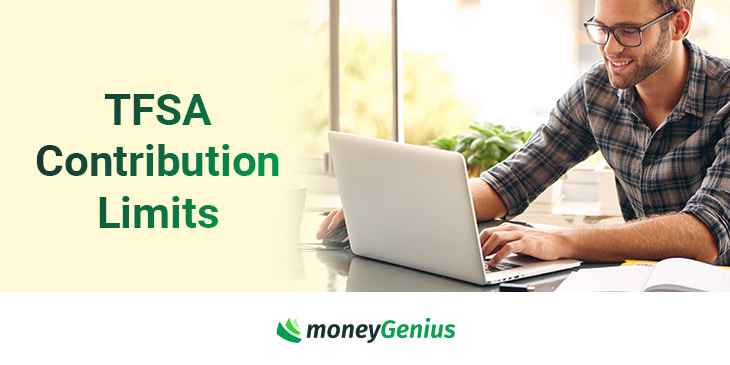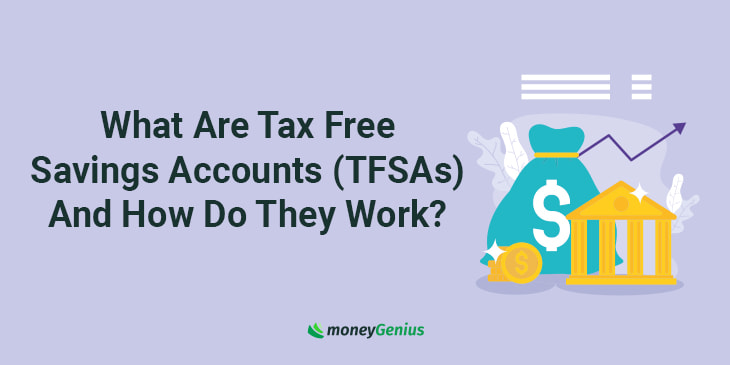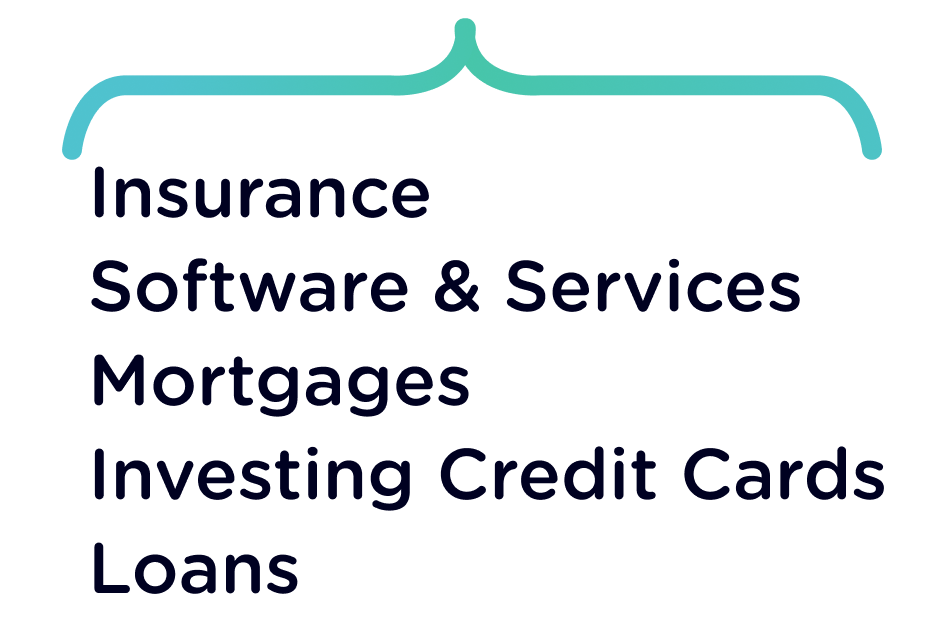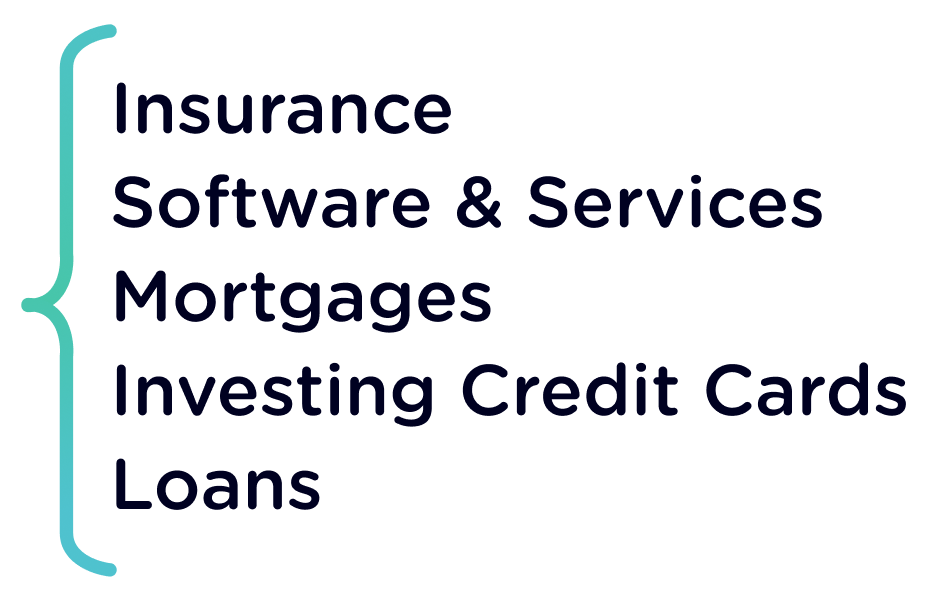A TFSA (Tax-Free Savings Account) is a great way to grow your savings because investment gains, interest, and dividends are all tax-free – both while your money is in the account and when you withdraw it. This makes it an excellent tool for long-term growth, as you won't pay taxes on the returns you earn over time.
Our TFSA guide offers helpful information on TFSA rules and regulations to help you choose the best product for your needs.
Best TFSA 2025 winner: Scotiabank TFSA
Our pick for the best TFSA in Canada 2025 is the Scotiabank TFSA. Not only does Scotiabank offer tons of investing options, it also offers four different types of GICs, giving you plenty of options to grow your money.
How we picked the best TFSAs
To evaluate TFSAs, we analyze over 20 data points to generate a trustworthy Genius Rating. We consider all aspects of a TFSA, including investment options, fees, perks, customer satisfaction, and promotions, to assess its overall value. Then, the TFSA’s features are rated based on how they stack up against other available options.
The top 3 TFSAs in Canada
A TFSA can take many different forms, ranging from a registered savings account to a GIC. Banks in Canada tend to offer a selection of options, giving you flexibility to pursue your tax-free desires.
Here are the banks with the best collection of TFSA products.
If you're wondering how our Genius Ratings are calculated, it starts out by breaking each product down into its main features. Once that's done, each feature is given a score out of 5 based on how it compares to similar products on the market. These scores are then averaged out to get the Genius Ratings you see below.
A Scotiabank TFSA is an easy way to take advantage of tax-free savings while investing with a trustworthy big bank. You’ll get a variety of options, including GICs (4 different types, in fact), mutual funds, portfolios, and cash savings accounts. You can also invest in stocks and bonds in your self-directed TFSA through Scotia iTrade.
- Lots of investing options
- 4 different types of GICs
- Lackluster return on TFSA savings account
- No special features and not much detail on the website
- Age of majority
- Canadian citizen
- Cashable
- Non-cashable
- Market linked
- Personal redeemable
A BMO TFSA can hold a variety of investment products, including GICs, stocks, ETFs, mutual funds, and cash savings accounts. So whether you prefer a hands-off or a DIY approach to investing, BMO may have an option for you though their various TFSA products.
- Backed by a good reputation
- Get guaranteed returns with BMO GICs
- Keep your money accessible with a savings account
- BMO InvestorLine for the DIY investors
- Leave investing to the experts with mutual funds and portfolios
- Low interest rate on the savings account
- Make sure you know the applicable fees of certain investment products
- Nothing special to set BMO apart from the big bank pack
- Age of majority
- Canadian citizen
- Redeemable
- Non-redeemable
- Income Builder
- Market-linked
RBC offers an impressive spread of TFSA investment options, appealing to hands-on and laid-back investors alike. If you prefer trading your money yourself, you can open a RBC Direct Investing TFSA. But if you prefer investing to be a bit more lowkey, you can choose to invest in TFSA GICs, mutual funds, portfolios, or even a registered savings account.
- A big name you know and trust
- Get guaranteed return with a wide variety of TFSA GICs
- Take control of your investments with RBC Direct Investing
- Invest in a professionally managed portfolio with RBC InvestEase
- Open a TFSA mutual fund
- High base rates for RBC Direct Investing
- Low rates on GICs and the savings account
- No current promotion for opening a RBC TFSA
- Nothing much to separate it from the crowd
- Age of majority
- Canadian citizen
- Have a Social Insurance Number (SIN)
- Redeem RBC Rewards points towards contributions to your TFSA
- Cashable
- Non-cashable
- Building Block
- Market-linked
- U.S Dollar
What is a TFSA?
This acronym stands for Tax Free Savings Account, and at its core, a TFSA is a registered investment account that can hold a number of different products, including:
- Saving accounts
- GICs
- Portfolios
- Stocks
- Mutual funds
Any money you invest in the products within your TFSA can grow tax free, which is the primary benefit of a TFSA. This means any income earned on the account (including investment income and capital gains) won't be taxed, even upon withdrawal.
TFSA eligibility
There are a few requirements for those looking to open a TFSA:
- Be a resident of Canada
- Be 18 years of age – or the age of majority in your home province
- Have a valid Social Insurance Number
Additionally, non-residents of Canada can still open a TFSA. After making contributions, however, these non-residents are charged a 1% tax for each month the contribution stays in the account.
And although you can’t technically open a TFSA until you’re 18, once you reach this age you’re able to contribute the full annual amount. So even if your birthday is in December and you open the account with less than a month left in the year, you’re still able to contribute the full amount for that year.
Where to open a TFSA
You can open various types of TFSAs at many different financial institutions across Canada.
Open a TFSA at a big bank
If you're looking for the most comprehensive TFSA possible (one that includes a variety of different investment products all in one place, for example) then going with a big bank may be your best bet.
They usually offer close to half a dozen different investment products that are available to be registered as a TFSA. This way, you can keep your TFSA GICs, savings accounts, and portfolios all in one place – making it way easier to keep track of your money.
All of the big 5 banks have their own brokerage, so you can trade stocks and other products on the market as you wish.
But keep in mind that you're usually paying for the convenience of a one-stop shop like a big bank. You won't normally find the best prices (or even best returns) from a big bank.
Open a TFSA at an online bank
Online banks or places like credit unions often offer a couple of TFSA choices to spice up your investment portfolio.
While there are only a handful of investment options available, like a savings account or GIC, the bright side is that the fees and returns tend to be an improvement over a big bank.
Open a TFSA with an online broker or robo advisor
If you want to stay away from banks, many discount online brokers and robo advisors offer TFSA accounts.
This way you can save on fees while also participating in investments that have the potential to give you higher returns.
Contribution limits for the best TFSA Canada
You'll need to keep in mind that TFSAs have strict contribution limits that change each year.
This means you're only allowed to deposit a certain amount into your TFSA accounts. If you go over your limit, you'll have to pay 1% tax on the excess amount until it's no longer in excess.
Depending on how much you have in your account, overcontribution penalties can get pretty pricey – and it effectively cancels out the account’s tax-free feature.
How to calculate your TFSA contribution limit
Your individual contribution limit grows each year by a certain amount, starting the year you turn 18 (or starting in 2009 if you were older than 18 at the time the account was opened).
This room increases even if you don't open a TFSA or file an income tax return.
Take a look at how these limits have fluctuated since 2009:
- 2009: $5,000
- 2010: $5,000
- 2011: $5,000
- 2012: $5,000
- 2013: $5,500
- 2014: $5,500
- 2015: $10,000
- 2016: $5,500
- 2017: $5,500
- 2018: $5,500
- 2019: $6,000
- 2020: $6,000
- 2021: $6,000
- 2022: $6,000
- 2023: $6,500
- 2024: $7,000

In order to determine how much TFSA room you have, all you need to do is add together all the amounts starting with the year you turned 18 (or 2009), then subtract any contributions you've made so far.
TFSA calculator
There are TFSA calculators available if you need a bit of help to figure out how much contribution room you have. Here's a good TFSA Limit Calculator from The Globe And Mail for you to try.
Most banks have calculators to help you determine how much your TFSA would be worth after a few years – like this TD TFSA calculator.
TFSA Canada withdrawals
Generally speaking, you can withdraw from your TFSA at any time and by any amount. Usually, all you need to do is call your bank or financial institution to make the withdrawal and it will be a no-questions-asked situation – but they do need to report it to the government.
Why does the government need to know? It's because any withdrawals you make in a year frees up some contribution room for the next year, and the government keeps track of this.
For example, if you’d put $1,000 in your TFSA in 2017 and took out $500 in 2018 – you'd have had an extra $500 worth of room available in your TFSA for 2019.
Just keep in mind that making withdrawals doesn't free up contribution room for the same year – it's only the year after.
Pros and cons of TFSAs
| Pros | Cons |
|---|---|
|
|
Best TFSA Canada vs. RRSP
A TFSA often gets compared to an RRSP – another type of registered savings plan with built-in tax benefits. But there are plenty of differences between them.
| Account | TFSA | RRSP |
|---|---|---|
| Tax benefit | * Investments grow tax free within the account | * Investments are sheltered from tax while in the account * Contributions can be used as deductions on your income tax return |
| Contribution limit | * 2024: $7,000 | * 2024: $30,780 |
| Withdraw rules | * Withdraw at virtually any time and any amount | * RRSP withdrawals are subject to tax penalties, unless for specific purposes or for retirement |
Editorial Disclaimer: The content here reflects the author's opinion alone, and is not endorsed or sponsored by a bank, credit card issuer, rewards program or other entity. For complete and updated product information please visit the product issuer's website.
FAQ
What is a TFSA?
A TFSA, or tax free savings account, is a registered savings plan that allows you to invest without paying taxes on things like investment income and capital gains. Your TFSA can hold a variety of different investment products.
Who can open a TFSA?
Any resident of Canada who's over the age of 18 and has a valid SIN can open a TFSA – some non-residents can open one as well, but they're charged 1% tax for each month the contribution stays in the account.
How much can I contribute to a TFSA?
Your TFSA contribution room starts the year you turn 18 (or 2009 if you weren't 18 yet in that year). Every year after that, your room increases by a certain amount, even if you don't have a TFSA open.
How do I withdraw from my TFSA?
You can withdraw funds at any time, but you will likely have to call your bank or financial institution to arrange the transaction. Anything you withdraw will be added to your contribution room for the next year.
What's the difference between a TFSA and RRSP?
TFSAs and RRSPs are both registered accounts, but TFSAs allow you to invest without paying taxes on your gains while RRSPs are only tax-sheltered until withdrawal. You also can't claim TFSA contributions on your taxes, but you can with RRSPs.
Will I get the best TFSA rates from a big bank?
At the time of writing, big banks like BMO, Scotiabank, and CIBC have 1-year term GIC rates around the 3.25% mark, while online alternatives like EQ Bank and Motive Financial are at a much higher 4%.
Discover more investment products
Want to learn more about top investment products in Canada? Check out our reviews here:





























